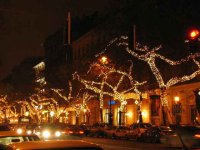 |
 |
 |
 |
 |
| magyar | English | deutsch | italiano | espańol |
City structure of Budapest
Budapest City Guide:
Budapest Public Transportation
Metro Lines of Budapest
Weather in Budapest
Central Market Hall
St. Stephen's Basilica
Gellert Thermal Bath and Swimming Pool
Gellért Hill
Budapest baths
Hungarian National Opera
Museum of Fine Arts
Gallery of Arts
Museums and galleries
Heroes' Square
Budapest Zoo and Botanical Garden
Budapest Amusement Park
City Park Skating Rink
Margaret Island
The Citadella
Sziget Festival
Ráday street
Puskás Ferenc Stadium
Botanical Garden
Budapest Card
Confectioners in Budapest
City structure of Budapest
Ferihegy 1 Airport
Ferihegy 2 Airport
Airline Companies at Ferihegy
Parking in Budapest
Public Toilets
Distances from Budapest
New Year's Eve in Budapest
Air Pollution in Budapest
Pickpockets in Budapest
Homeless People in Budapest
Changing Money in Budapest
Ships in Budapest
West End City Center
Market customs
The Danube in Budapest
Hungary Tourist Guide
| Hotel Booking |
| Hungarian cities |
| Programs |
| Car Rental |
| Weather |
 The Hungarian capital is situated on the banks of the Danube, which devides it into two basically different parts. The mountainous region of the Buda side is positioned opposite Pest, which is situated flat on the floor.
The Hungarian capital is situated on the banks of the Danube, which devides it into two basically different parts. The mountainous region of the Buda side is positioned opposite Pest, which is situated flat on the floor. On the Budapest reach of the Danube three islands can be found. The biggest island is Csepel, the second one is Margaret island, which is situated in the heart of the city and has a long historic past. The island of Old Buda is situated north to this one. The two parts of the city- Buda and Pest - are connected by 9 bridges: 7 highway and 2 railway bridges.
Since 1994 Budapest has been divided into 23 districts, out of which 6 are situated in Buda, 16 is situated in Pest and one is in between the two city parts, situated on Csepel island. The districts are numbered clockwise, from the inside outwards. Some districts bear the name of a traditional quarter as their official name, such district is Józsefváros, the 8th district of Budapest. The 8th district is one of the most controversial district of the city. At the same time it is the oldest district; it has recently celebrated its 225th anniversary. The number of inhabitants exceeds 80, 000. The inner and central parts of the district are among those districts of Budapest, which are best provided with public transport. The Eastern Railway Station, the most important passenger station of Hungary can be found here.
The most crowded district of Budapest, which also has the least park areas is the 7th district, often referred to as "Erzsébetváros". At the end of the Second World War the ghetto of Budapest could be found here, which was freed on 18 January, 1945. At the time of the liberation 70, 000 of the 120, 000 Hungarian jews were alive in the ghetto.
The 5th district (City-Lipótváros) is the heart of the capital and Hungary at the same time, it is the central district of Pest. Those institutions are situated here, which serve as the centres of scientific, political, artistic and business life, the district also houses such sights as Váci Street, Kossuth Square, the Parliament, or Saint Stephen's Cathedral. In fact the 5th is one of the smallest districts of Budapest. It consists of two parts, the City and "Lipótváros" right next to it. The 5th district is a traffic junction, which can be approached from plenty of directions. It is connected to the other bank of the Danube by 4 bridges. The river ports of the capital can also be found on the riverbank that belongs to the City.
In Budapest the so called inner workplace-ring is the area of the 5th and 6th districts. There are few homes here, as this part is so crowded, that most people come here to work only. Districts 7 and 8 can be considered as the inner residential ring. The parts of the city making up the outer workplace-ring are the following: Újpest, Angyalföld, Kőbánya, Csepel, Óbuda, Budafok. The outer residential ring is made up of: Kispest, Pesterzsébet, Káposztásmegyer, and Békásmegyer.
E-mail:

Fax: +36 1 900 9079
All rights reserved.